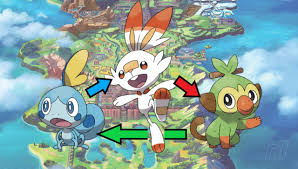Did you know that Ground-type Pokémon are weak to not one, but four different types in battles? Understanding these weaknesses can be crucial for strategizing effectively in Pokémon battles.
From the advantage Water-types hold over Ground to the vulnerabilities Ground faces against Ice and Grass types, each weakness poses a unique challenge. But that’s not all – the interactions with Electric, Fighting, and Steel types add another layer of complexity to the type matchups.
Ready to uncover the intricacies of Ground-type weaknesses and strengths?
Ground Weaknesses Explained
To understand Ground weaknesses in Pokémon, focus on the elemental interactions that make certain types vulnerable to Ground attacks. Ground-type moves are super effective against Fire, Electric, Poison, Rock, and Steel Pokémon.
Fire Pokémon are weak to Ground due to the conductivity of the Earth, which can absorb and dissipate the heat from their fiery attacks.
Electric Pokémon, being grounded to their environment, are susceptible to Ground attacks that disrupt their electrical currents.
Poison Pokémon, often associated with pollution and toxins, find themselves easily affected by the purifying and absorbing nature of the Ground element.
Rock and Steel Pokémon, despite their sturdy exterior, struggle against Ground attacks that can penetrate and destabilize their foundations.
Understanding these weaknesses can give you a strategic advantage in battles, allowing you to exploit the vulnerabilities of these types and secure victories with well-planned Ground-type moves.
Water-Type Advantage
The Water type holds a significant advantage in Pokémon battles due to its versatility and effectiveness against multiple other types. Water-type moves are super effective against Ground, Rock, and Fire types. This broad coverage allows Water-type Pokémon to handle a wide range of opponents effectively. Additionally, Water-type Pokémon often have access to a variety of powerful moves like Surf, Hydro Pump, and Scald, which can deal significant damage to their adversaries.
Water types also have the added benefit of being resistant to opposing Water-type moves, making them formidable in mirror matches. Furthermore, Water Pokémon are often able to learn Ice-type moves, which can further expand their coverage by targeting Grass, Dragon, and Flying types. This flexibility makes Water-type Pokémon valuable assets in battles, as they can adapt to various situations and provide reliable damage output.
Ice and Grass Vulnerabilities
Ice and Grass types pose significant vulnerabilities for Water-type Pokémon in battles due to their weaknesses to Ice-type moves and Grass-type moves, respectively.
Ice-type moves are super effective against Water-type Pokémon, making them a dangerous threat on the battlefield. Pokémon like Lapras, Cloyster, and Abomasnow can easily exploit this weakness with moves such as Ice Beam and Blizzard.
Grass-type Pokémon, on the other hand, have an advantage over Water-types due to the weakness of Water to Grass-type moves. Attacks like Solar Beam, Energy Ball, and Leaf Blade can deal significant damage to Water-type Pokémon like Blastoise, Gyarados, and Vaporeon.
This vulnerability requires Water-type trainers to strategize carefully when facing Ice and Grass types in battles. Utilizing Pokémon with secondary types that can counter these weaknesses, such as Electric or Fighting types, can help mitigate the risks posed by Ice and Grass opponents.
Remember to consider type matchups and plan your moves wisely to overcome these vulnerabilities effectively.
How Ground Fares Against Electric
When facing Electric-type Pokémon, Ground-type Pokémon have a significant advantage due to their immunity to Electric-type moves. This immunity means that Electric attacks will have no effect on Ground Pokémon, making them a solid choice to counter Electric types in battles. Ground-type moves are also super effective against Electric-type Pokémon, dealing double damage. This means that Ground-type Pokémon can hit Electric types hard, often resulting in a swift defeat for them.
In addition to their immunity and super effectiveness, Ground-type Pokémon can also learn a variety of moves that can further exploit Electric types’ weaknesses. Moves like Earthquake, Earth Power, and Dig are commonly used by Ground-type Pokémon to deal massive damage to Electric types. Ground Pokémon’s high Attack stats further enhance the effectiveness of these moves, making them even more formidable against Electric types.
Fighting and Steel Type Strengths
Ground types may have the upper hand against Electric Pokémon, but their advantage extends beyond just that type matchup. When it comes to Fighting types, Ground Pokémon hold a significant advantage. Ground moves are super effective against Fighting types, dealing double damage and often resulting in a swift knockout. This makes Ground Pokémon a formidable choice when facing opponents relying on Fighting-type moves.
Similarly, Ground types have an edge against Steel Pokémon. While Ground moves aren’t super effective against Steel types, they’re still able to deal neutral damage. This means that Ground Pokémon can hold their own in battles against Steel types, making them a versatile choice in matchups where Steel Pokémon are prevalent.
Conclusion
In conclusion, Ground type Pokémon may have weaknesses to Water, Ice, Grass, and Electric types, but they also have advantages against Fire, Poison, Rock, and Steel types. Understanding these weaknesses and strengths can help you strategize better in battles.
Keep in mind that Ground types are strong against Electric types, making them a valuable asset in your team lineup. Train your Ground type Pokémon well and they’ll prove to be formidable opponents in battles.
